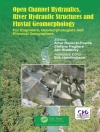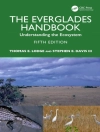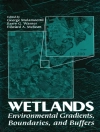This book introduces the variety of research skills necessary for integrated environmental science, which are applicable to atmospheric, oceanic, terrestrial, and biota studies. The surface environment of the earth is a complex system consisting of atmospheric, oceanic, and terrestrial regions as well as the biota therein, all of which interact with one another to various extents. The integration of research disciplines including earth science, biology, chemistry, physics, and social science is a core of environmental science. It encourages students and early-career scientists to take a broad view of the whole environmental system. Detailed practical information for the field or laboratory work in this book helps students and scientists to plan research strategy for their own scope and interests. In addition, this book is also useful for professionals to teach field and laboratory work in environmental science to students. This book is based on the environmental summer school program organized by the Institute of Nature and Environmental Technology, Kanazawa University, in Japan.
Daftar Isi
1 A perspective on integrated environmental studies.- 2 PM2.5 pollution and monitoring.- 3 Importance of particulate matter in cloud formation.- 4 Biodiversity of marine animals: Introduction to marine animals with a focus on taxonomy.- 5 Observation of marine invertebrates in the Noto Peninsula.- 6 Assessing the influence of polycyclic aromatic hydrocarbons on aquatic animals.- 7 Submarine ground-water discharge assessment by 222Rn measurement.
Tentang Penulis
Noriko Hasebe is a professor at the Institute of Nature and Environmental Technology (K-INET), Kanazawa University, Japan. She received her doctoral degree in geology and mineralogy at Kyoto University in 1994. She was a visiting researcher at University College London in 2001–2003 and at the Korea Institute of Geoscience and Mineral Resources in 2013. She is a geochronologist, working on fission track dating, luminescence dating, and U-Pb dating methods; the application of these techniques to paleo-environmental studies in lake-catchment systems; and disaster-related geosciences including the study of volcanoes, faulting, and tsunami.
Masato Honda is an assistant professor at the Institute of Nature and Environmental Technology (K-INET), Kanazawa University, Japan. He worked as a research scientist in the Wadsworth Center, Department of Health, New York State, USA, from 2014 to 2018. He worked closely with several universities to monitor the environmental pollution ofanthropogenic organic compounds, especially in Asian countries. His research interests include environmental toxicology, analytical chemistry, and bio-monitoring. He has published several papers in the field of environmental pollution and toxicology. He is an environmental toxicologist by training, and he holds a Ph.D. and M.Sc. from Kyushu University, Japan.
Keisuke Fukushi is a professor at the Institute of Nature and Environmental Technology (K-INET), Kanazawa University, Japan. His research interests include the prediction and reconstruction of chemical reactions among soil, water, and atmosphere in earth and extraterrestrial bodies. He held a short-term visiting position in the Department of Earth and Planetary Sciences, Johns Hopkins University, USA, in 2010 and the Bureau de Recherches Géologiques et Minières (French geological survey), France, in 2011. He is a geochemist by training, and he holds a Ph.D. from Kanazawa University. Seiya Nagao is a professor and the director of the Institute of Nature and Environmental Technology (K-INET), Kanazawa University, Japan. The research focus of the K-INET is the transboundary pollution via atmosphere and ocean in East Asia under the joint usage/research program organized by the Ministry of Education, Culture, Sports, Science and Technology, Japan. He has held positions at governmental institutions and in academia, including the Japan Atomic Energy Research Institute (present Japan Atomic Energy Agency), Hokkaido University, and Kanazawa University. His research interests include the fate of organic matter and radionuclides in aquatic environments such as river and lake watersheds and coastal marine environments, as well as integrated environmental studies of atmosphere–land–coastal ocean systems, based on the migration behavior of geo-materials.












